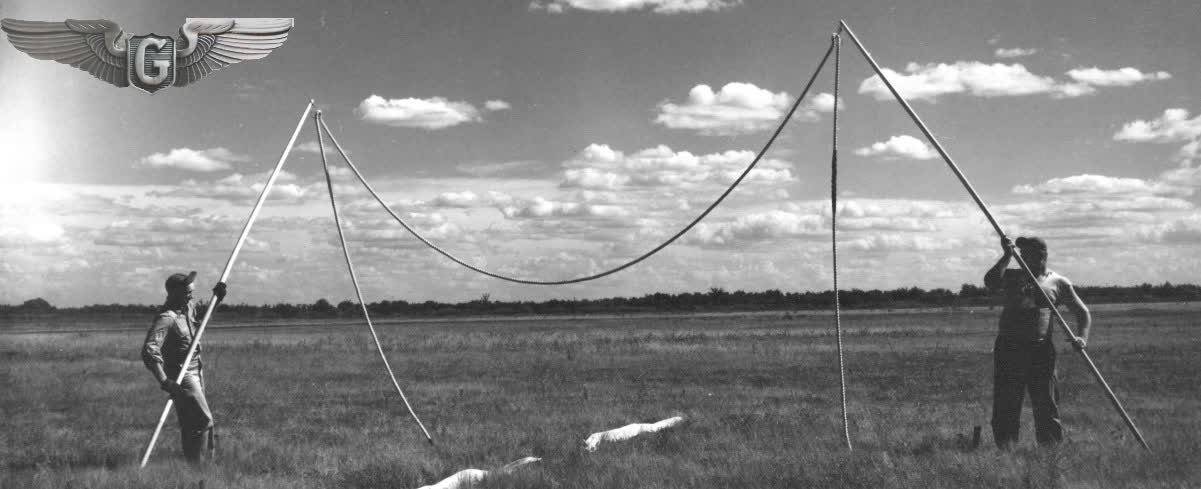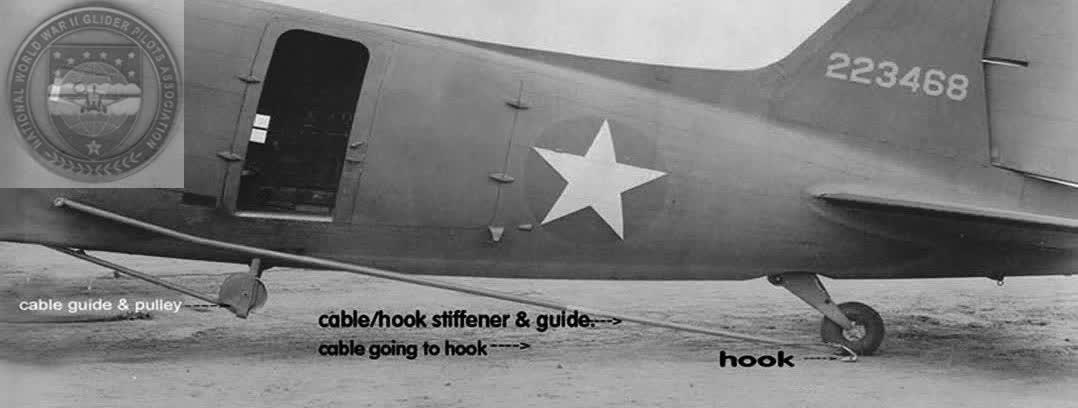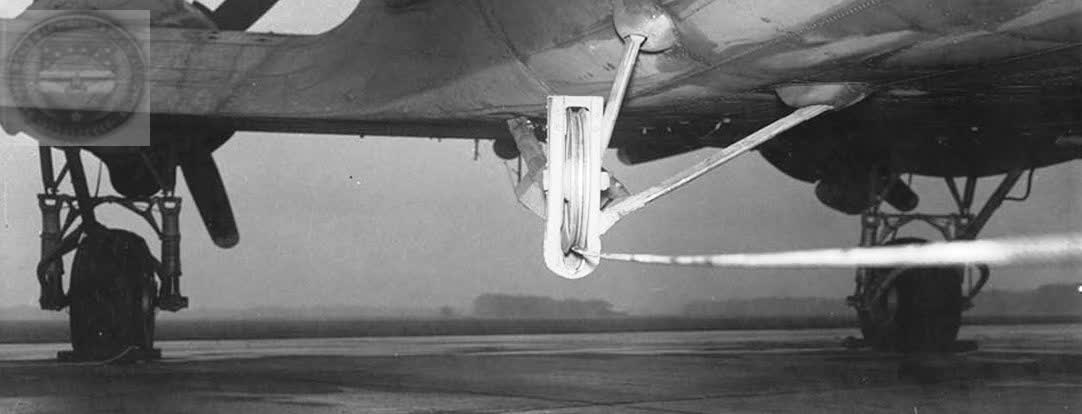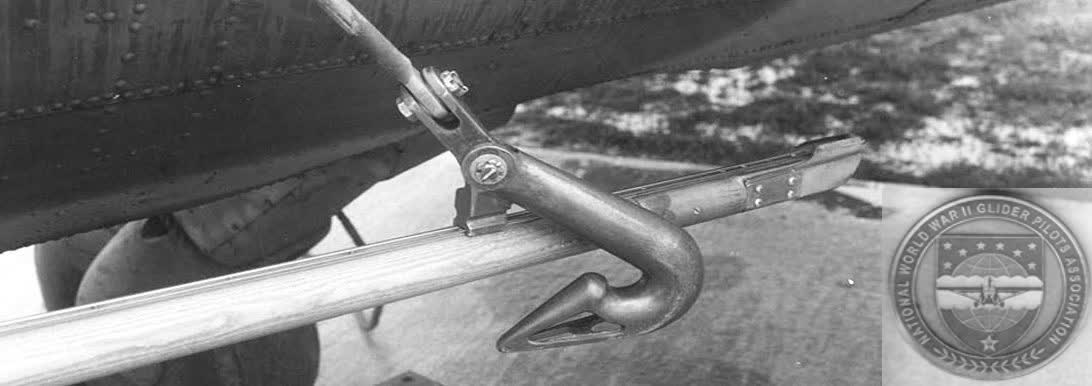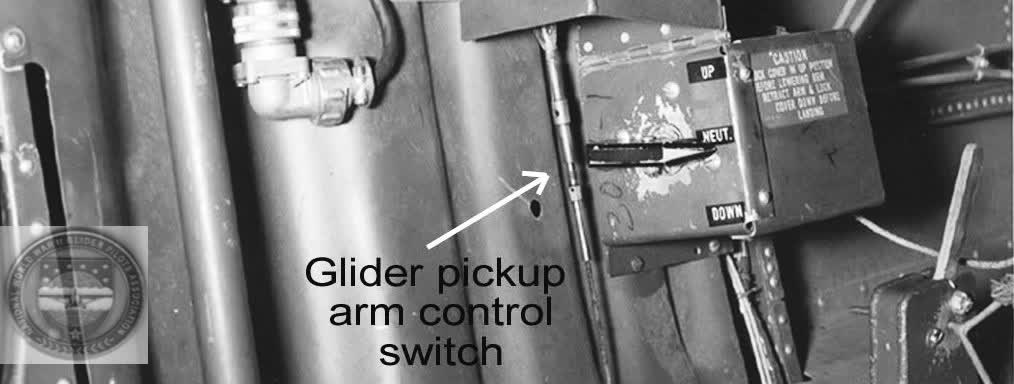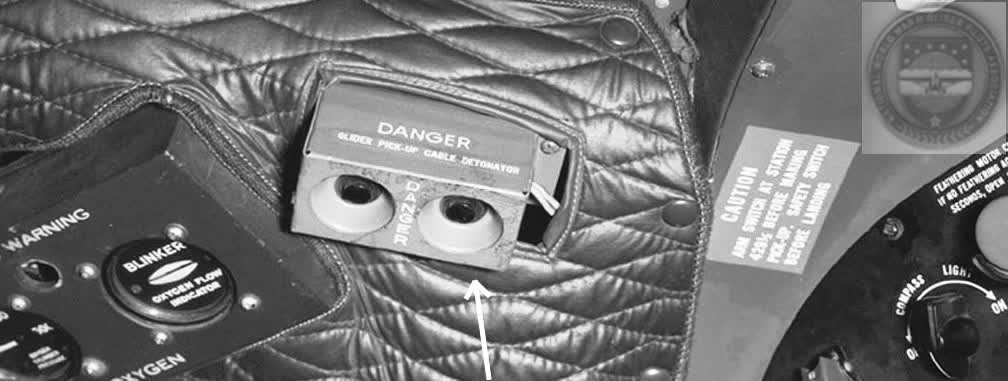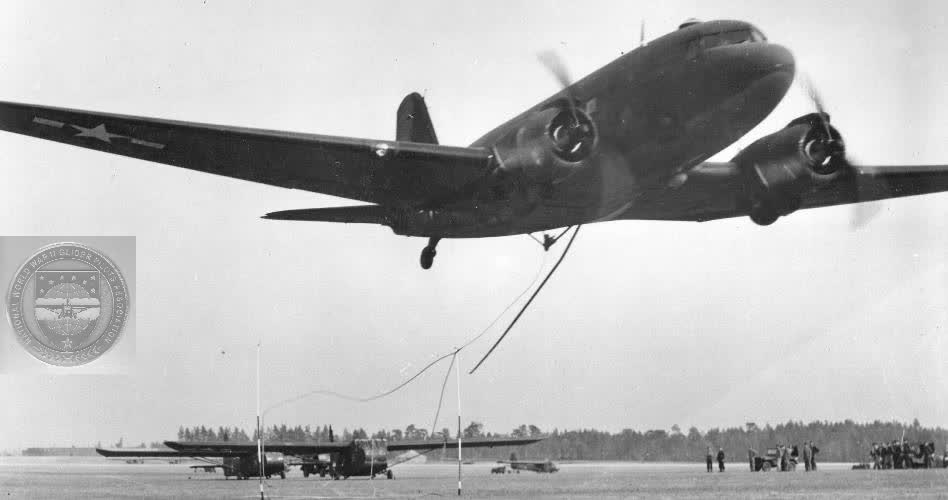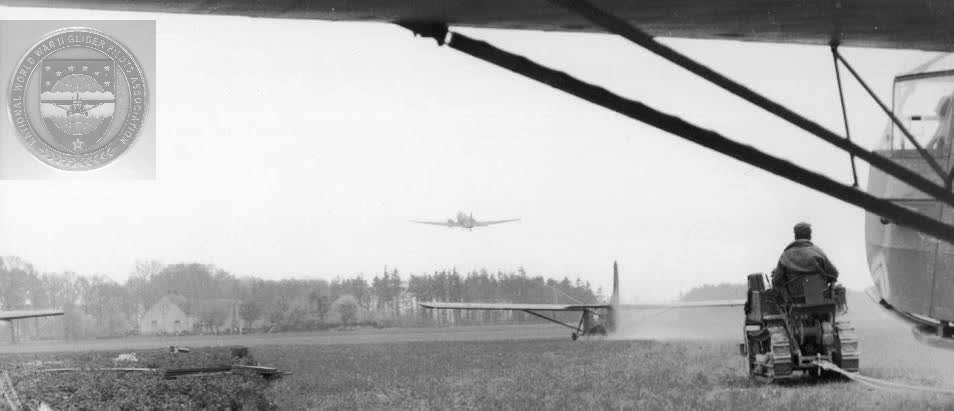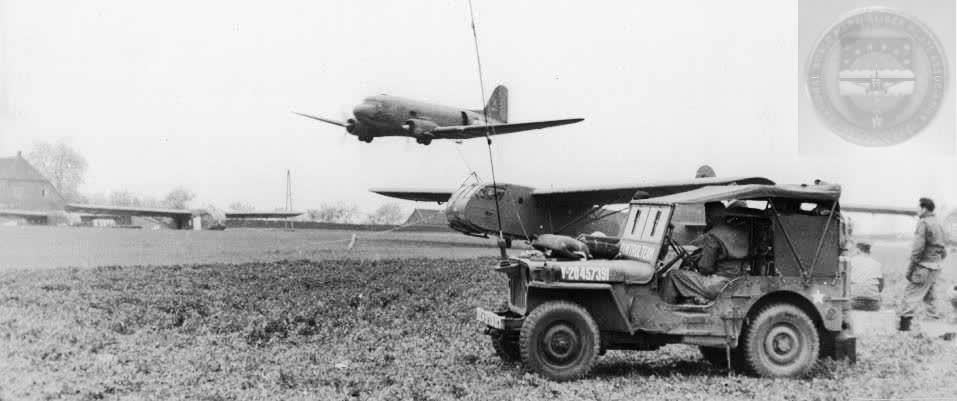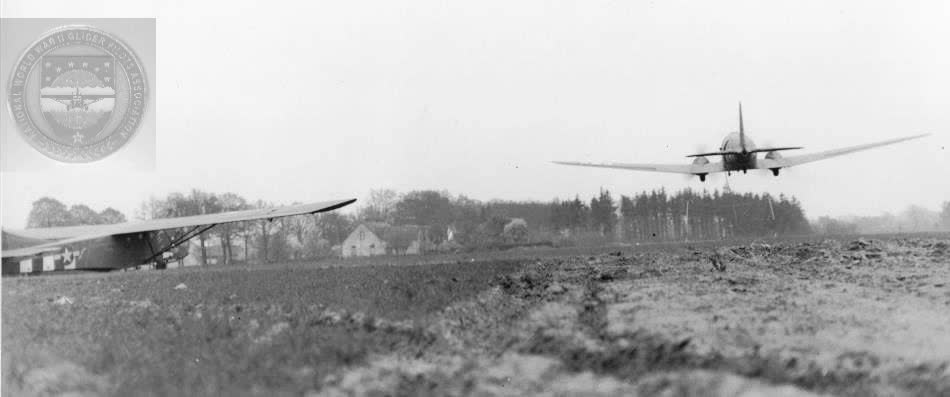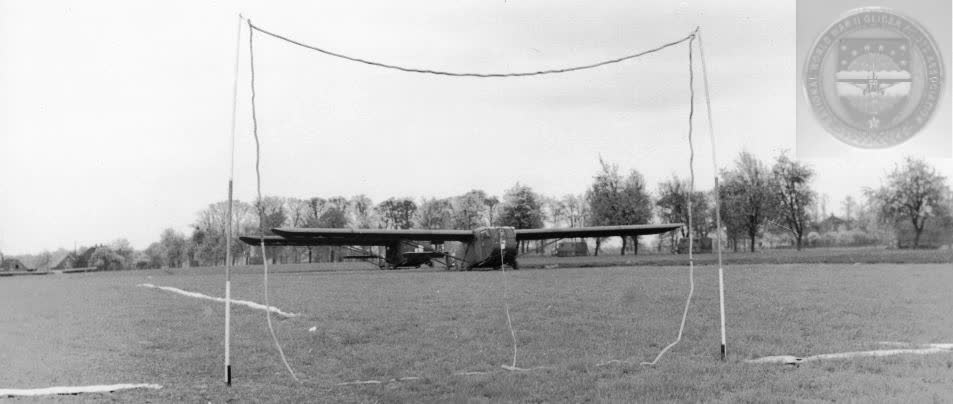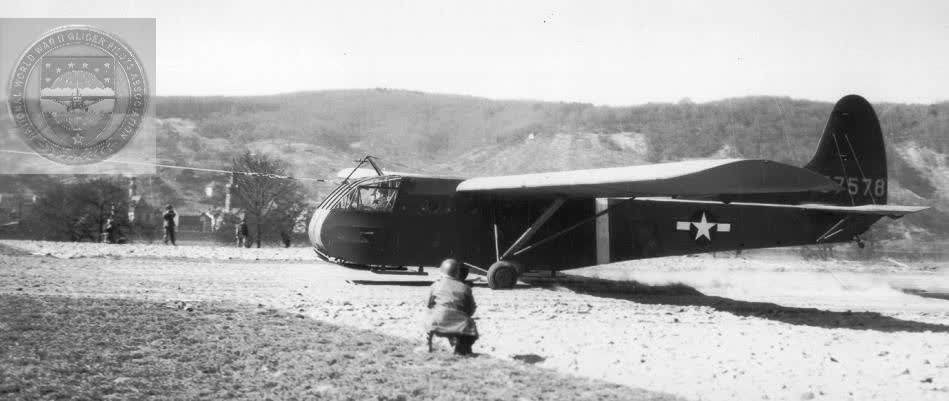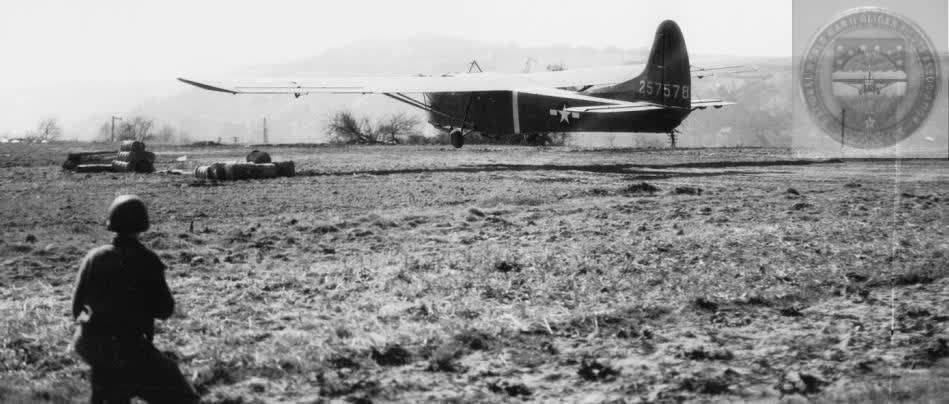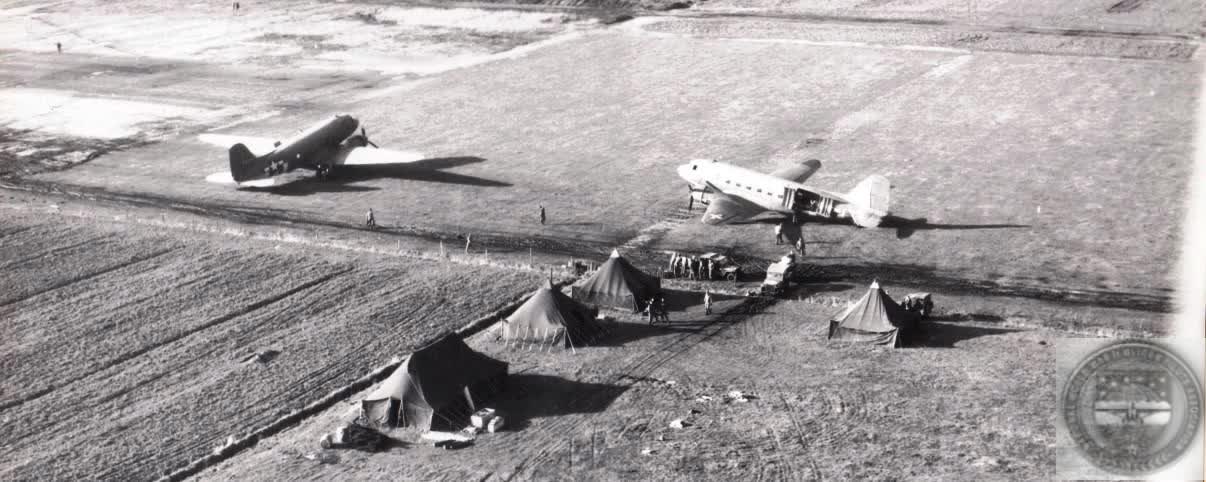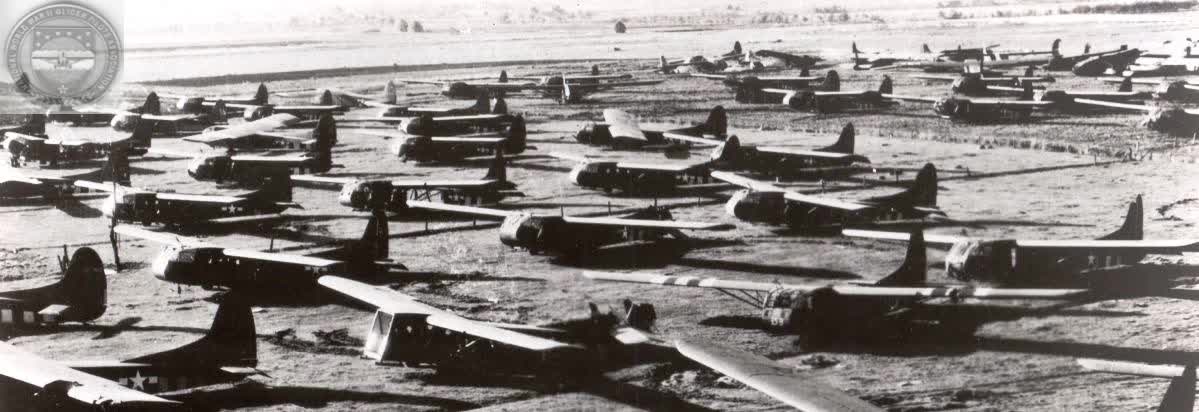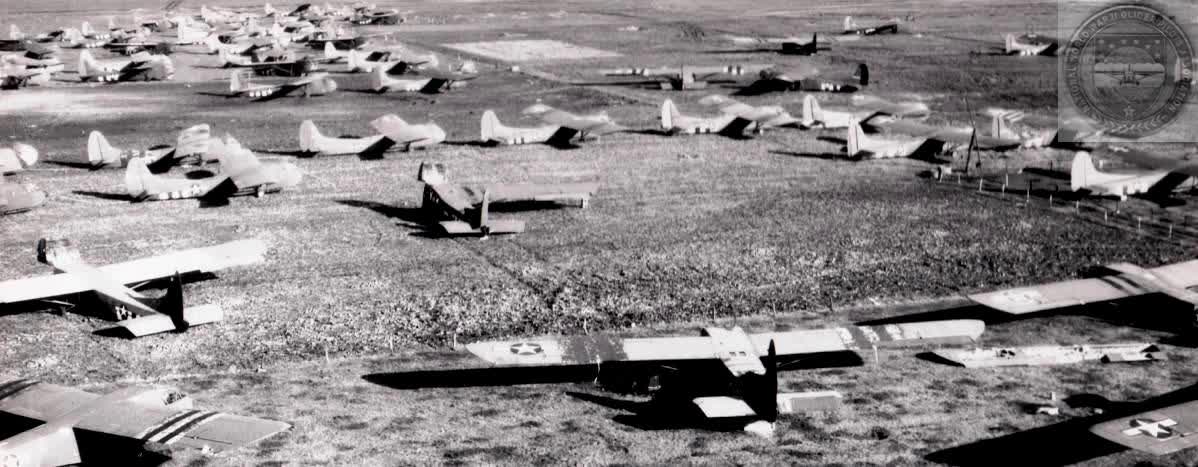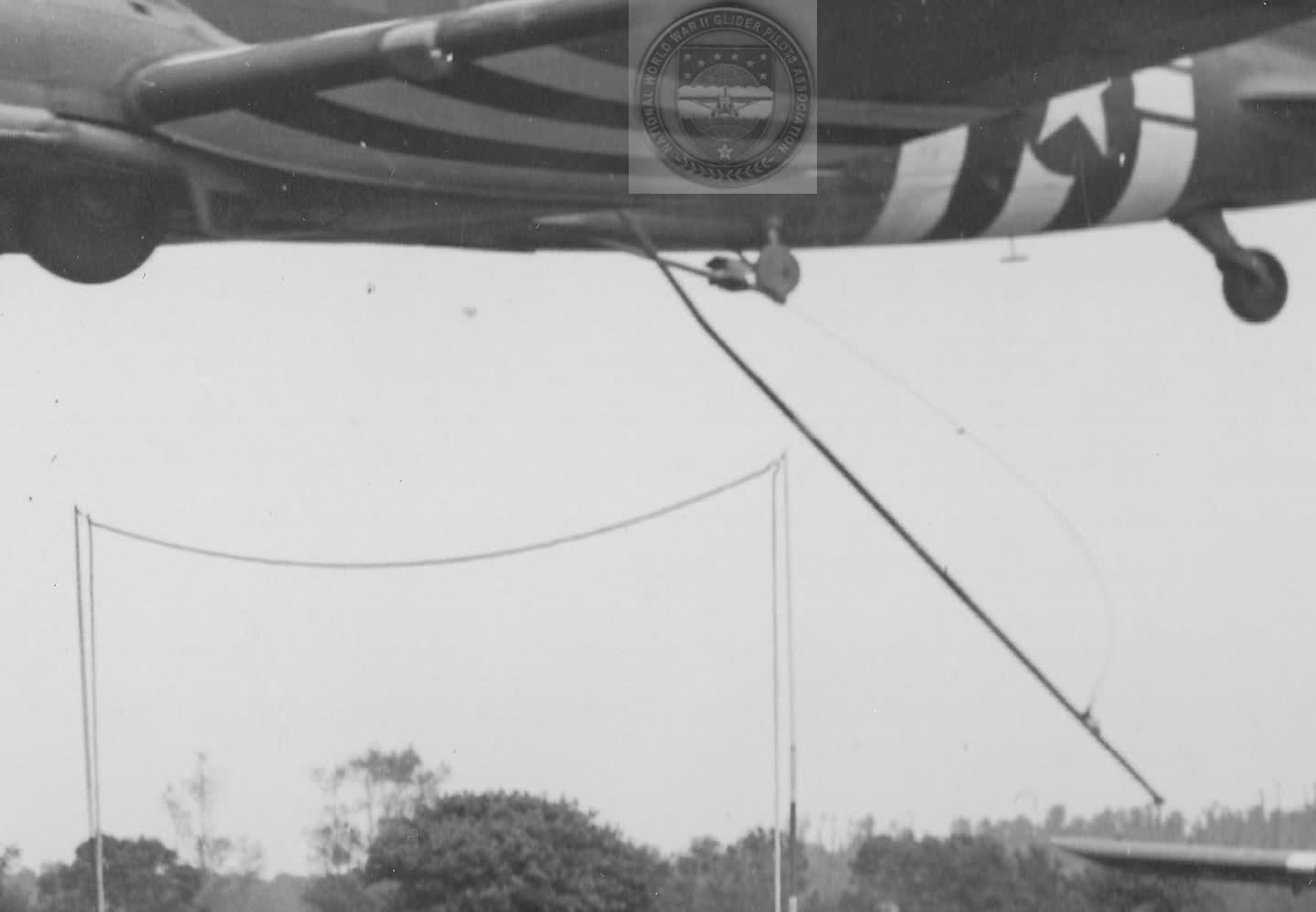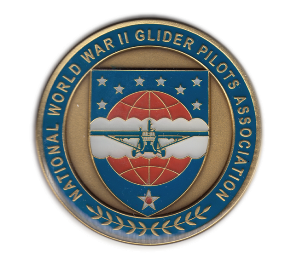National WWII Glider Pilots AssociationLegacy Organization of veterans National WWII Glider Pilots Association. Discover our History, Preserve our Legacy | ||
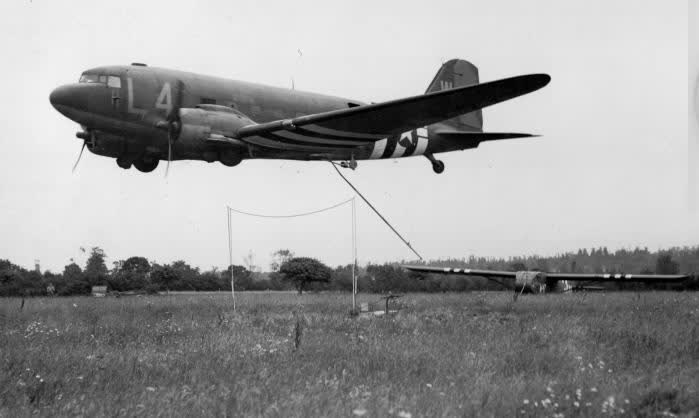 This C-47 photo has made the rounds among the Troop Carrier enthusiasts. Some have seen this squadron code many times in the series Band of Brothers and the air field Upottery. This plane belonged to the 91st Troop Carrier Squadron, 439th Troop Carrier Group. I am the pilot of this C-47 and my story all started at Baer Field, Ft. Wayne, Indiana. When it came time to go overseas we were sent to Fort Wayne on 1 February 1944. It was here that I was assigned a replacement C-47 and this one was equipped with a glider pickup system. We left Ft. Wayne for England on 12 February 1944 flying the Northern route which was a few days shorter than the southern route. On the last leg of our journey I took off from Keflavik Air Field, Reykjavik, Iceland, now heading for Balderton Field, Newark, England. I landed, shut the engines down, and filed out my paperwork then got out of the cockpit. As I exited the aircraft a Major was standing at the bottom of the steps and asked me how this particular plane flew. I told him that it just made a flawless flight from the U.S. to England. He made some affirmative comment and walked away. A week later I was assigned to fly for the day. I went out to the plane and Major Morton., the same Major who asked me about the plane, was sitting in the pilot’s seat. Major Howard U. Morton was the 91st Squadron Commander and this was the beginning of my flying co-pilot for Major Morton. One day flying with the Major, whose specialty and expertise was snatching gliders, which we were doing just that, snatching gliders, he asked me if I would like to train to be a snatch pilot. I was familiar with planes snatching bundles from the ground from the time I was 12 years old. There was a mail company in Pittsburg that figured out how to drop and snatch mail bundles into and out of small rural towns. They used a single engine airplane and would fly from base to base and a person in the plane, that was not a pilot, would sort mail. The process went like this: they would drop a bundle then pick up a bundle and on the way to the next base the mail from the picked up bundle would be sorted into the bundles to be dropped and the process started again. So naturally I had an interest in picking up gliders and told the Major I certainly would like to learn. Major Morton told me to switch seats and for the next gliders I was snatching them under the Major’s tutelage and I was soon certified as a snatch pilot by the Major. Our first combat operation was Normandy, Serial 12, positon Number 64 and we dropped paratroopers from the 101st Airborne. We went on to fly other combat and resupply missions. Before Normandy our Group was moved to Upottery. One day, after the Normandy mission, I was called over to the continent. I was up flying (checking out a new pilot for snatching because two of our snatch pilots, Marston F Sargent and Steve C Baran , had been killed on D-day) when I received a message from the control tower that Major Morton wanted me to fly to France and snatch a glider he had found that was in good condition. We took off for France and located the field with the glider Maj. Morton had found. The poles and looped tow rope were up and the ground marked and ready for the snatch. On the first pass everything seemed normal; pickup arm was down and in the ready position. I was flying at 20 feet altitude. As I flew across the tow rope and felt the pickup arm hit the tow rope and make the snatch, so I thought. Then, all of a sudden, we were free, no drag which meant no glider. We circled the field while the rope was set up again on the poles. I had obviously hit the tow rope so I could not figure out why the hook did not catch the rope.
This was going to be tricky because the propellers of the plane extend one and a half feet beyond the retracted landing wheels. If a pilot crosses the tow rope too low the propeller will cut the rope before it is snatched by the pickup arm. The pole is twelve feet off the ground, add a foot and a half of propeller, the hook is stuck somewhere around two to three feet above its correct location, meaning my altitude has to lower two to three feet from the normal 20 feet altitude in order to hit the rope with the hook. So I had a two to three foot clearance. A piece of cake. I went in as low as 17 feet and hoped that I hit what was now a very narrow window between the propellers and the towline. The pickup arm again hit the rope and I poured on the power of the C-47 Pratt and Whitney engines and felt what seems like the C-47 came to an almost mid-air stop, then surged forward, we had a glider in tow. Once the glider was completely on tow and off the pickup arm the arm was retracted and could be inspected. Here it was discovered that the track the hook travels down had broken off half way down the arm. This glider was the first glider in the Normandy invasion to be snatched from France. Gerald Berry’s history: FLYING PIPELING I did fly the Pipeline Missions hauling gasoline and 155mm ammunition to Patton and evacuating released prisoners of war on the same missions. French went to Paris, British to Brussels, and Americans to Le Havre. Was a busy time. In June of 2019 Gerald will be a guest at MacDill Air Force Base for the 75th Normandy Anniversary event. The Research Team is looking forward to hearing all about the event. -------------------------------- 1 91st TROOP CARRIER SQUADRON HISTORICAL REPORT MARCH 1945 Data Sources:
|
CG-4A WWII CARGO GLIDER GENERAL SPECIFICATION - CG-4A
Wing Span -- 83', 8" Length (Overall) -- 48', 3-3/4" Height -- 12', 7-7/16" Weight, design -- 3,750 lbs Gross Weight, design -- 7,500 lbs Wing Chord -- 10', 6" Specs for covering the CG-4A call for: Flightex Intermediate airplane fabric manufactured by Suncook Mills, or an equivalent light airplane cotton fabric. More Specifications
CG-4A WAS FLIMSY? COMMUNICATION SYSTEM CG-4A Loads CG-4A Load Facts CG-4A Cockpit CG-4A Instrument Panel 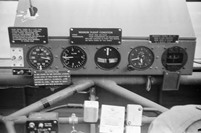 STORIES:
|
The HORSA GLIDER |
GLIDER PICKUP/Snatch Snatching a Glider RECLEMATION American Glider Pilots Captured by British A/B by William SIMONSEN Double Snatch by Charles Day First Glider Snatched from Normandy by Gerald BERRY REMAGEN Glider Retrieval by Jungle Moonlight: Burma, 1944 by Leon SPENCER Charles DAY Keith H. THOMS NWWIIGPA Deputy Wing Commander
Eastern United States Military Snatch Pickup Summary
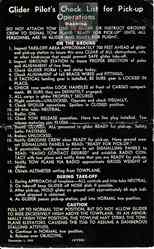
Glider Pilot Check List
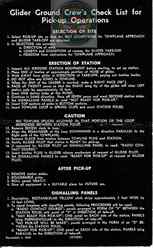
Glider Ground Crew Check List
|
OUR TOW SHIPS |

